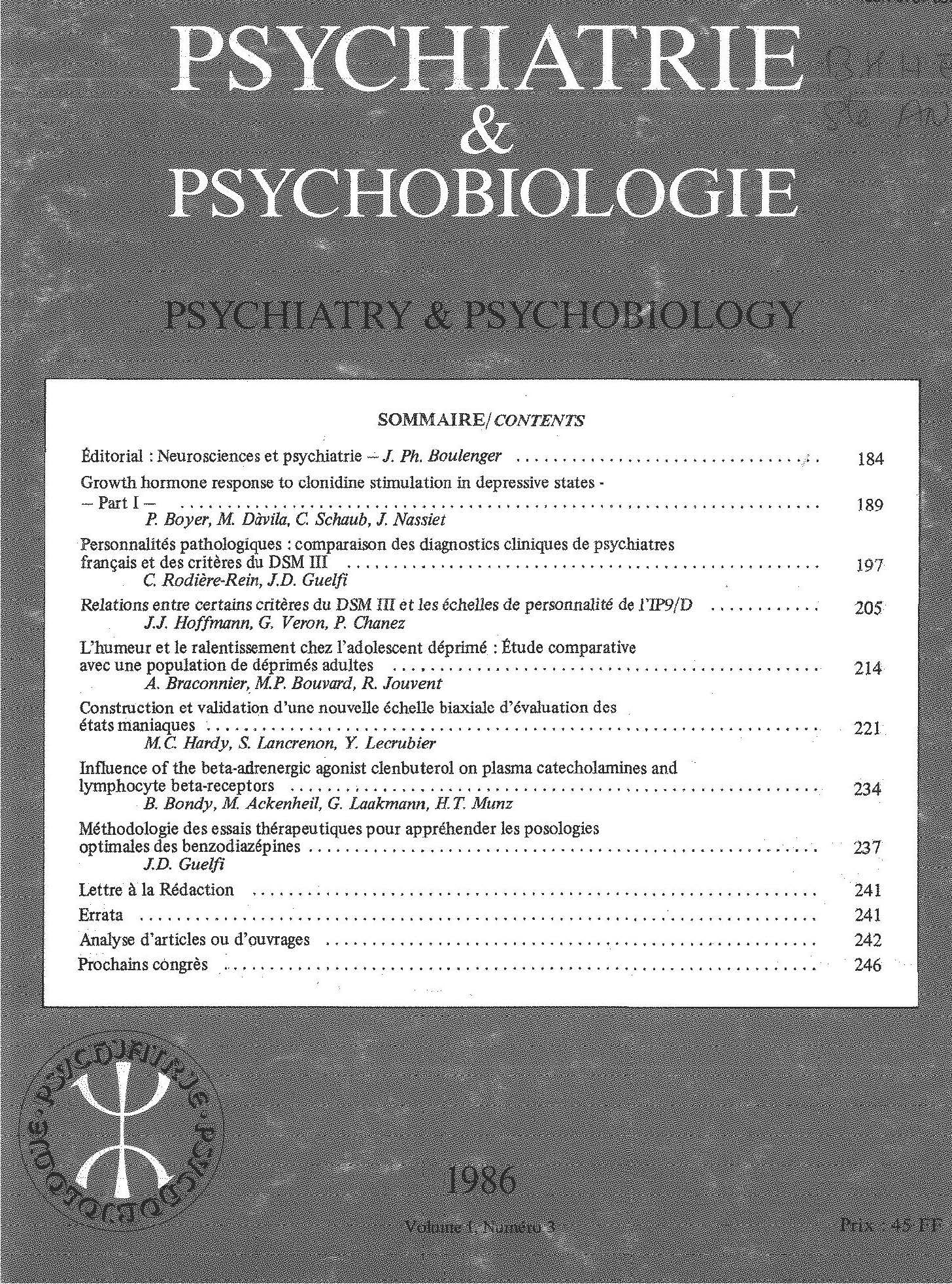No CrossRef data available.
Article contents
La phénoménologie de la dépression
Published online by Cambridge University Press: 28 April 2020
Résumé
Tandis que certains chercheurs définissent la dépression comme continuum composé d’états bénins et graves reflétant essentiellement la même identité, d’autres pensent que le concept de dépression est, en revanche, hétérogène et constitué d’un groupe de sous-catégories distinctes.
Si tel est le cas, identifier ces sous-catégories devient une priorité majeure. De telles sous-catégories doivent être comprises par rapport à leurs mécanismes fondamentaux neuronaux, voire même moléculaires. Toutefois, afin d’effectuer des recherches à ce sujet, il faut toujours commencer par la phénoménologie clinique.
Dans les dépressions graves, deux sous-catégories majeures ont été proposées; l’une est la dépression endogène ou mélancolique et l’autre la dépression bipolaire. On a tendance à postuler l’existence d’un mécanisme biogénique fondamental relativement autonome, bien que pas forcément libre d’influences environnementales.
Cet article étudie une série de tentatives visant à l’identification des sous-catégories distinctes de dépression. Une approche, utilisée dans une série de travaux, consiste à utiliser des techniques mathématiques telles que l’analyse par grappes, afin d’identifier de façon phénoménologique des sous-catégories similaires dans le spectre de la dépression.
Cette approche a identifié d’une façon conséquente un syndrome mélancolique ou endogène. Nos efforts pour valider ce concept de dépression endogène, par exemple la recherche d’antécédents familiaux, ont eu moins de succès.
Une autre méthode pour sous-catégoriser la dépression souligne que la sous-catégorie bipolaire représente une lorme distincte d’une dépression grave provoquée d’une façon endogène. Nous avons examiné la phénoménologie de la dépression bipolaire versus la dépression unipolaire et nous avons trouvé qu’il y a un certain nombre de caractéristiques qui différencient significativement la première de la dernière. Il est donc fort possible que la dépression endogène et la dépression bipolaire soient deux phénomènes distincts.
Summary
While some investigators believe that the concept of depression is a continuum with mild and severe forms reflecting essentially the same entity, most suspect that the concept is instead heterogeneous and consist of a group of discrete subtypes. If this is so, identifying subtypes is a major priority. Ultimalely such subtypes must be understood in terms of their underlying neural and even molecular mechanisms. Yet in order to search for such mechanisms, we still must begin with clinical phenomenoiogy.
Two major subtypes of serious depressions have been proposed. Endogenous or melancholic depression is one, while bipolar depression is another. Thinking about both these subtypes, one tends to assume that there is an underlying biogemc mechanism that is relatively autonomous, although not necessarily free of environmental influences.
This paper examines a series of attempts to identify discrete subtypes of depression. One approach, used in a series of investigations, involves the use of mathematical techniques such as cluster analysis in order to identify phenomenologically similar subgroups within the depressive spectrum. This approach has consistently identified a melancolic or endogenous syndrome. Our attempts to validale the concept of endogenous depression through examining external correlates, such as family history, have been less successful.
An alternate method for subtyping depression stresses that the bipolar subtype represents a discrete form of severe endogenously caused depression. We have examined the phenomenology of bipolar versus unipolar depression and found it to differ significantly in a number of respects. Thus, endogenous depression and bipolar depression may represent different phenomena.
Keywords
- Type
- Research Article
- Information
- Copyright
- Copyright © European Psychiatric Association 1998



Comments
No Comments have been published for this article.